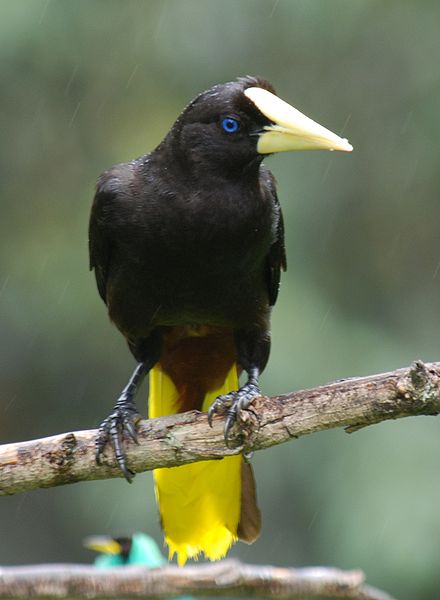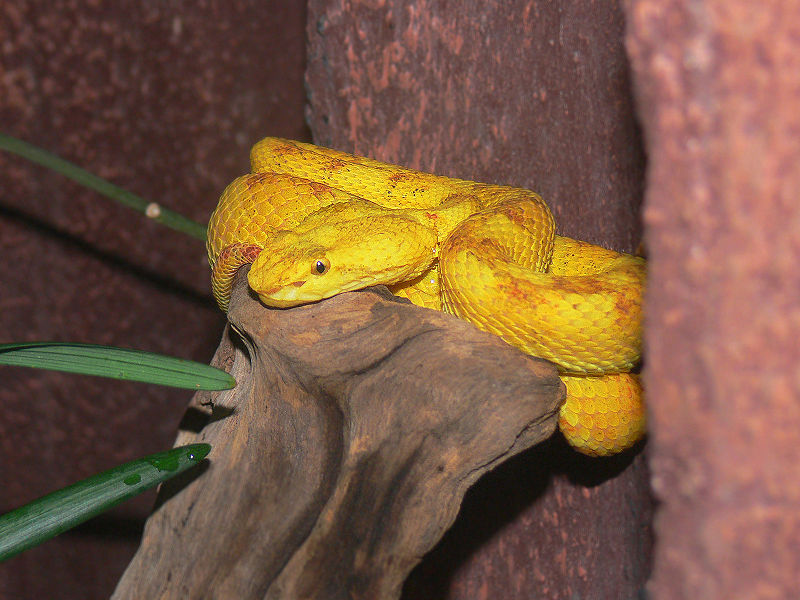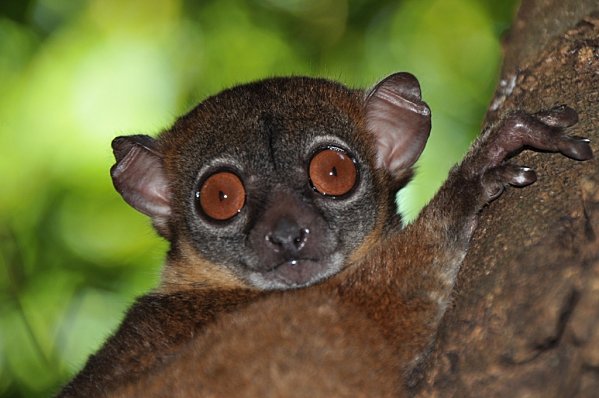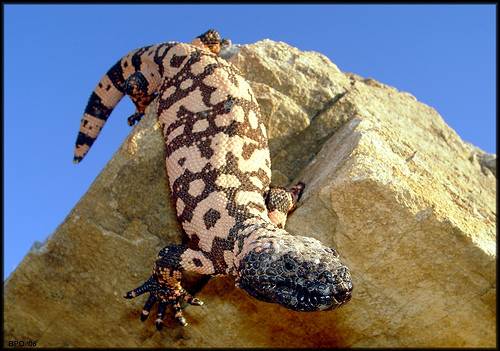
The Crested Oropendola should probably be a target customer for companies such as Old Spice and Sunlight. I don’t have the heart to call this particular passerine bird downright smelly but they are know to have a musty stench to them. This “wonderful” scent is caused by an oily-like substance produced from the bird’s preen gland, which is used as part of their daily grooming habits. After all, you want to look good for lady birds, right?
An Un-Fair Advantage
Speaking of attracting the perfect mate – the Crested Oropendola has an unique mating behaviour. You see, these birds are called colonial breeders, which just means they hang out in a big colony. Each one of these large groups has a dominant male which typically mates with the majority of the females in the clan. In fact, there are about 15-30 females and only 3 or 4 males participating in the mating ritual. Don’t worry though, the female still makes the male Crested Oropendola court them. The male will need to perform an elaborate bowing display, which looks similar to a variety of complex yoga moves, before the females will want anything to do with him.

Home Sweet Home
Once the mating ritual is complete, the female will lay 2 blotchy, blue-grey eggs into an impressive, hanging, woven nest. These eggs will hatch in about 15-19 days and the young chicks will be ready to join the rest of the group in approximately 24-36 days. The nests that the Crested Oropendola builds are spectacular as they are generally about 1.25 m (4.1 ft) in length. Similarly, these nests are intricately woven from grass and palm tree fibres. Actually, the picture to your left does a much better job showing how impressive their nests are. Pretty cool, eh?
The Perfect Diet…..Almost
When they aren’t building nests or preening themselves, the Crested Oropendola will gather into small groups in order to go out and forage. They are typically looking for yummy food items such as large insects, seeds, grain and of course fruit. Not a bad diet, if you ask me…well, except for the insects, of course. Interestingly enough, this particular bird doesn’t have to worry too much about predators as a result of their large colonies. Not surprisingly, most predators don’t care to take on a colony of a 100 birds or more. Not only does the large colony provide protection but you never have to worry about finding someone to hang out with. I think all of us should live in groups of 100 or more people. It would definitely make life a little more interesting!






